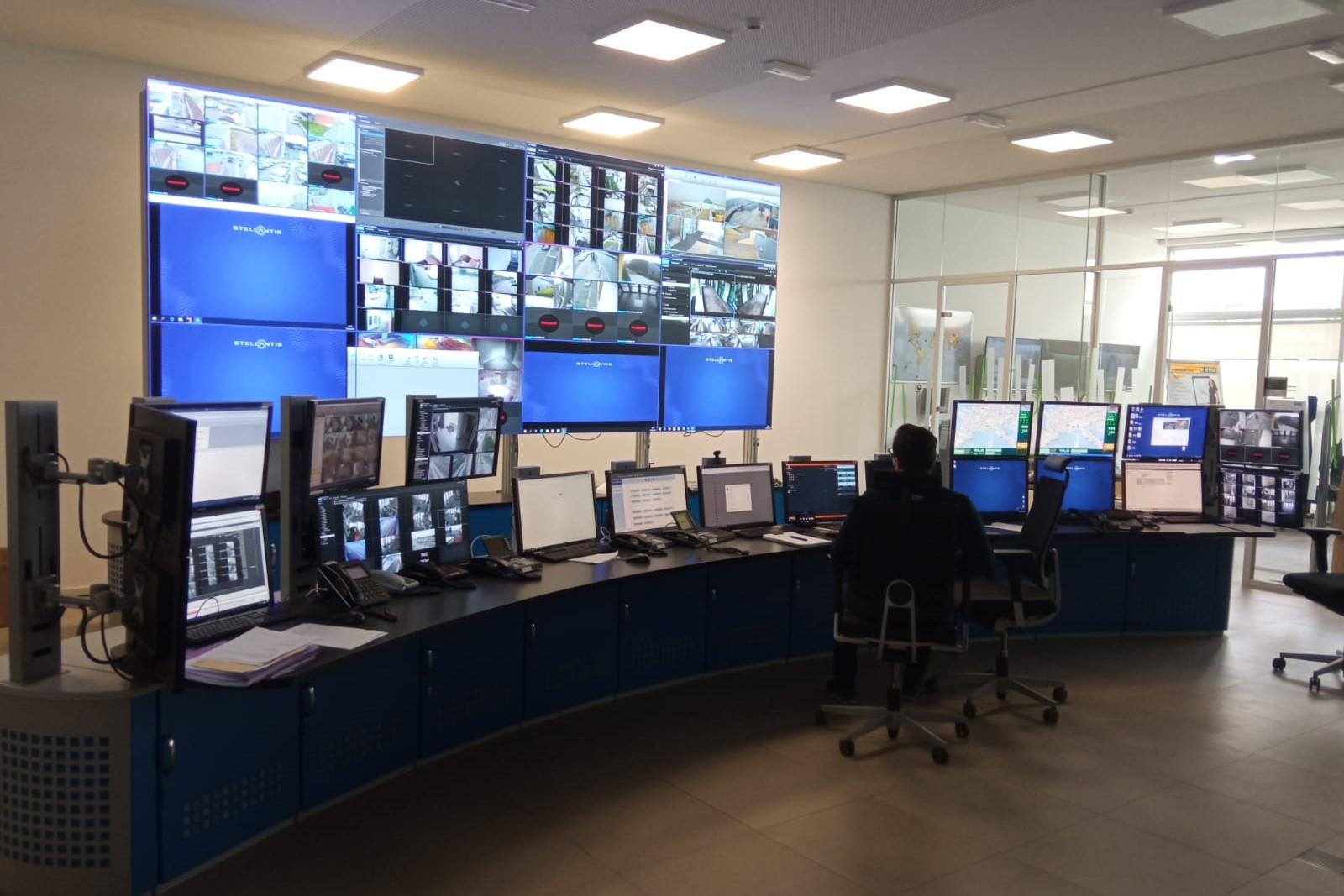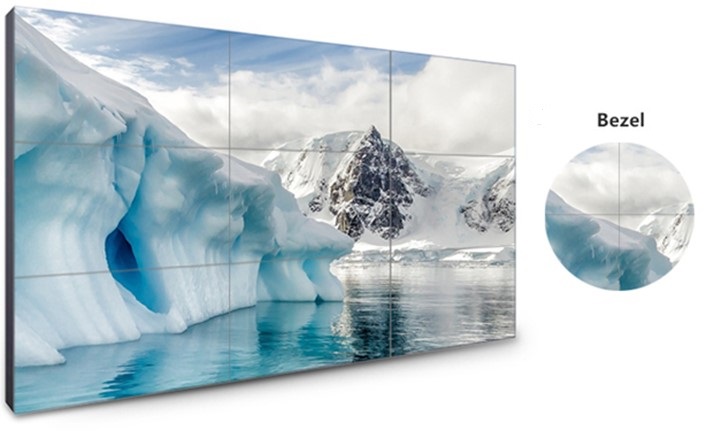

A Video Wall is a large screen made up of a variable number of panels combined like a mosaic to reach the desired size. The panels that form a Videowall are generally LED or LCD monitors, and have dimensions ranging from 46" to 55".
Example of a videowall system inside a control room - VideoWall Bosco 1000 Base
Why to use a video wall and not many separate monitors?
In the past, in most control centers, it was common to "hang" many separate monitors on a wall. This scenario was not only unpleasant to look at, but it was a “rigid” system. Each monitor had its own cable connected to a piece of equipment that transmitted only to that particular screen.
With the advent of increasingly advanced technology and the increase in the number of applications, the need arises for a single system that can manage many devices simultaneously: the Video Wall.
The video wall is not just a display but a real machine: on the video wall you can project many different sources through a wall controller.
Inside your computer or mobile phone, you have several applications installed that you can manage simultaneously from that single device with ease. Similarly, in a latest generation control center, there are many applications which however come from different and separate sources (computers, servers, PLCs, recorders, webcams, etc.). The video wall, through the wall controller, allows you to dynamically manage all applications coming from different sources as if they were installed on a single machine.
With the video wall system, there is no longer the rigidity of displaying a single application per monitor in a static manner. On the contrary, a video wall system allows you to dinamically create different scenarios.
For each particular application in your control room, you can dedicate the space and position you want at that moment. For example, you can enlarge the alarm source that you want to view in detail or display it in the central part of the video wall. You can change scenery with a simple click on a touchpad!
In this way, you can dedicate a "rented" space to each application, and the video wall becomes a machine for managing the multiple external sources.
Example Scenario on a VideoWall Bosco 1000 Plain
HOW TO CHOOSE THE DISPLAYS THAT COMPOSE A VIDEOWALL?
A videowall display is a product that must have particular characteristics that affect the price.
1. A video wall monitor must have a very high contrast and a backlight case.
Normally, a monitor has a film on the front surface that contains pixels, made of microLEDs printed on a sheet, which emit colors. In video wall displays, in addition to this microLED film, there is a case on the back with other LEDs that emit a very strong contrast light to make the image clearer.
The backlight case allows you to see the image clearly even at a distance of 4-5 meters. This aspect is very important within a control center where there are many operators who must be able to consult the videowall from different workstations and make decisions in real time.
2. A video wall monitor must have a brightness of at least 450 up to 700 lumens depending on the application sector.
For example, in the advertising industry, a brightness of at least 700 lumens is recommended (especially when viewed in sunlight) and a contrast of 2000:1 (static gamma).
Inside a control room, a brightness of 450 lumens and a contrast of 1000/1200:1 (static range) is recommended in order to not disturb the operators' eyes.

Control Room Stellatis (Fiat) - Videowall System Bosco
A problem encountered when composing a video wall is the "seams" between one monitor and another, called bezels in technical jargon.
The bezel is the “frame” of a monitor. The smaller the bezel the more valuable the monitor is. A video wall made up of monitors with a very small bezel is more aesthetically pleasing.
However, when a bezel is very thin (0.8/0.9 mm), the border pixels of the monitor are very close to the edge of the screen: a small bump is enough and the entire row of pixels could be damaged.
Monitors with a very thin bezel are aesthetically beautiful but extremely delicate. These displays are suitable for videowalls used, for example, in the advertising sector due to their aesthetic impact. However, screens with very thin bezels must be isolated from the external environment to protect them from vibrations that could damage the rows of pixels.
In more dynamic sectors, such as civil protection or surveillance, monitors with very thin bezels are not suitable. In a control room, there are often many operators who must make decisions in real time and interact dynamically with the video wall in the room.
For these environments, monitors with a bazel of 1.5 to 5 mm are recommended. Our experience leads us to recommend monitors with a 3.5mm bezel. With a 3.5 mm bezel you get the best compromise between robustness and image continuity. In addition, monitors must have a plastic or iron side plate to protect the lines of pixels on the border between one monitor and another.

HIGHLIGHTS OF BOSCO VIDEOWALLS FOR CONTROL CENTERS
1. Communication between displays
For a videowall to be functional, it must have a communication system between the monitors that compose it, generally an Ethernet port or an RS-232 port.
Have you ever wondered, for example, how to adjust the brightness of a video wall?
Using a remote control to adjust the brightness of individual displays is difficult and inconvenient, especially if there are many.
Bosco VideoWalls have a communication system between monitors that allows various operations to be carried out simultaneously on all modules. For example, you can turn all monitors on and off at once, adjust brightness, color, contrast, tint of all monitors at once.
2. Management of the single display
Over time, monitors tend to lose color. This phenomenon happens differently for each monitor. The need may therefore arise to adjust the settings of a single monitor. Operating a single monitor can be difficult and may require calling a technician.
To solve this problem, Bosco has created a touchpad through which you can adjust the settings of the individual display.
Through the touchpad, in addition to adjusting the settings, it is possible to check the "health" status of the monitors. Every anomaly, for example a monitor in temperature alarm, is visible and solvable through the touchpad.
IN CONCLUSION
The video wall is a smart machine that allows you to acquire informations from many sources and manage it through a single interface with extreme simplicity and speed. In a latest generation video wall, each display must have the ability to communicate both with the other monitors and individually with a control system.